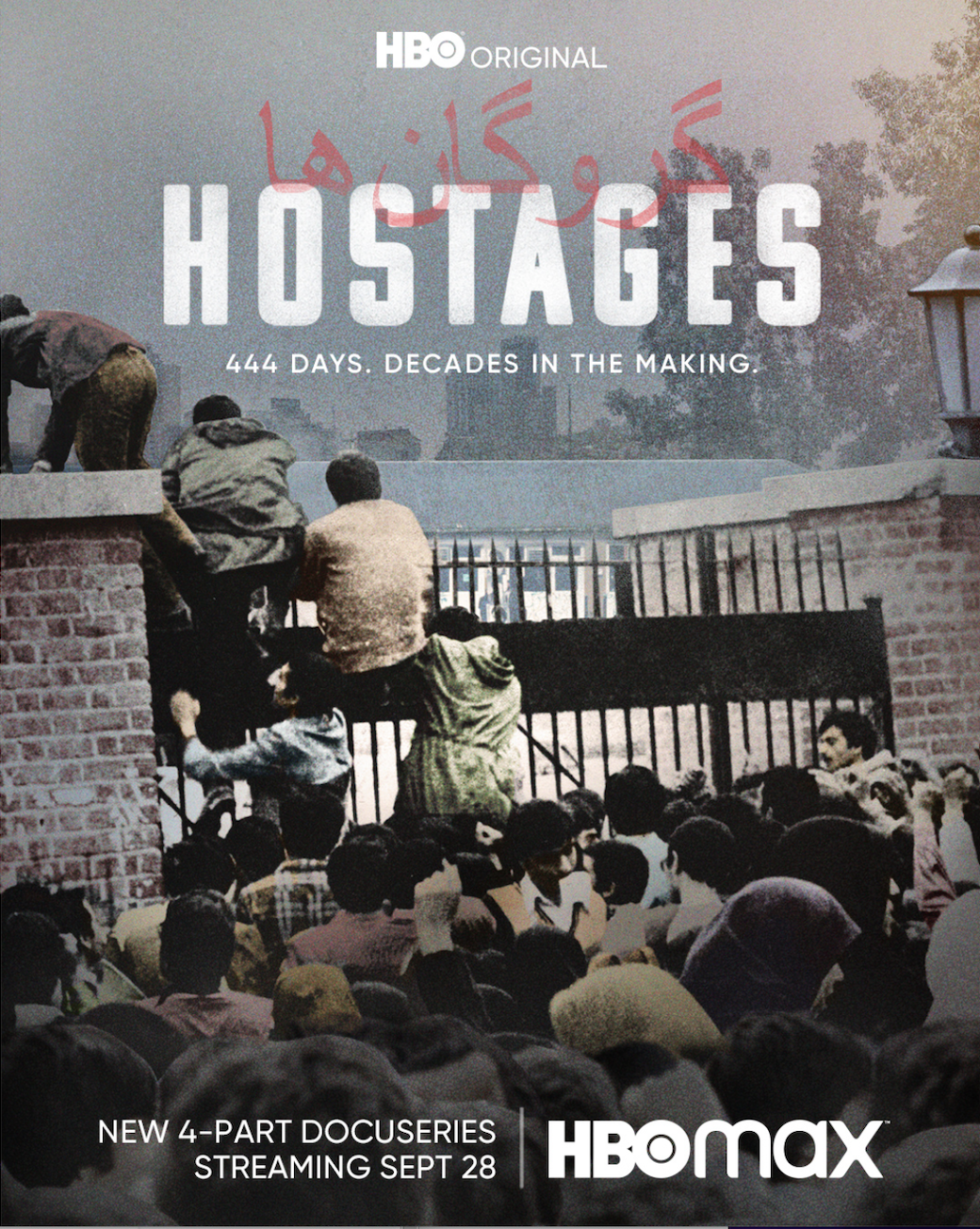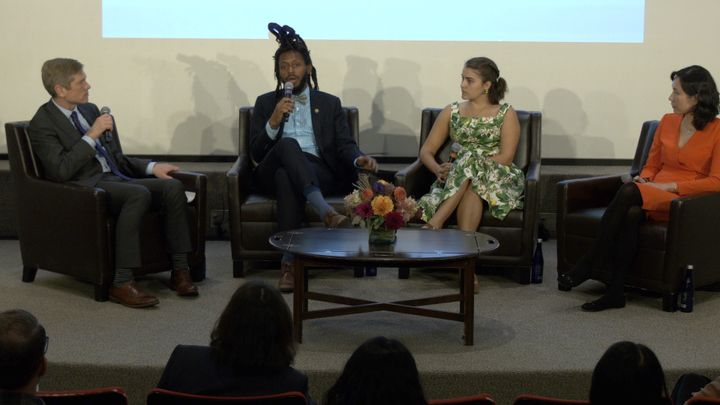“Hostages” Documents Iranian Hostage Crisis
On Nov. 29, Shahruz Ghaemi ’19 hosted a screening of “Hostages,” a documentary series about the Iranian hostage crisis. Senior Managing Editor Theo Hamilton ’23 reflects on the series, on which Ghaemi worked as an archival producer.

Last Tuesday, Nov. 29, a group of students and faculty gathered in Paino Lecture Hall to watch a screening of “Hostages,” a new four-part documentary about the Iranian hostage crisis and its historical context. The event was hosted by Shahruz Ghaemi ’19, who worked as an associate archival producer for the documentary — finding, sourcing, and sorting through archival material. The screening opened with an introduction from Professor of History and Asian Languages and Civilizations Monica Ringer, who had helped organize the event. Ghaemi also spoke, explaining the importance of narrating histories: “The legacy of the past is always up for contention, as are its possibilities.”
“Hostages” begins with a kaleidoscopic array of clips documenting reactions to the hostage crisis: American news channels breaking the story, Iranian revolutionaries condemning the embassy as “a CIA center” and “den of espionage,” and the hostages describing their fears of execution and hopes of “being home before Christmas.”
The broad strokes of the Iranian hostage crisis are well known: in the midst of the 1979 Iranian Revolution, a group of Iranian students stormed the U.S. Embassy in Tehran and held its 52 inhabitants hostage for 444 days, torpedoing Jimmy Carter’s chances of reelection and redefining Iranian politics in the process.
“Hostages” digs deeper into the history and provides insightful context and a broad spectrum of viewpoints on the crisis, demonstrating many of the strengths of documentaries as vessels for communicating historical information. Weaving together photos and recordings from the time and new interviews with experts on the hostage crisis, as well as with many of the hostages and hostage takers themselves, the series’ first episode provides a complex view of a period of growing dissent and anti-American sentiment in Iran. At the center of this history is the figure of the Shah, Mohammed Reza Pahlavi, who ruled Iran from 1941 to 1979.
In an interview with The Student, Ghaemi explained that one of the documentary’s goals was to tell the story “[without] taking any one particular side, understand where each of the sides came from.” “Hostages” accomplishes this goal in its portrayal of Shah Mohammad Reza Pahlavi: it balances interviews between some of the Shah’s supporters, who describe him as a progressive modernizer, and the revolutionaries who deposed him, who see him as a corrupt dictator.
Crucially, “Hostages” does not let the views expressed in these interviews go unchallenged, but also contextualizes these views by portraying events that formed them. . These events are shocking, but they are crucial to understanding the energy and force of the revolution itself: a lavish, three-quarters of a billion dollar private feast celebrating the 2,500th anniversary of the Persian Empire to utilizing secret police to lock up and torture political opponents and dissidents.
In one particularly moving interview, Iranian photographer Reza Deghati describes months of imprisonment and torture after distributing photos of starving and homeless Iranians from towns across the country. In another shocking interview with the Shah by an American reporter, the Shah is asked about his use of force to repress political enemies. He responds nonchalantly, “My only answer to that is — who cares?”
Throughout all four parts of the series, “Hostages” continues the practice of trying to understand all viewpoints without hiding the consequences of any side’s actions. As a viewer, I found this particularly helpful for navigating the politics of the Iranian Revolution. The opposition to the Shah came from a huge diversity of sources, ranging from reactionary extremists like Ayatollah Khomeini (who would become Supreme Leader of Iran) to moderate parliamentarians and radical left-wing organizations. Representatives of each of these positions, and many in between, appear in videos or interviews throughout “Hostages.”
In an interview with The Student, Ghaemi said that the documentary is able to take this approach in large part because “people were so engaged in making history at the time,” noting that amateur journalists, both American and Iranian, created a huge outpouring of sources. In fact, the archival team ended up working with 8,326 total photos and videos.
One of the most striking parts of “Hostages” was the historical nuance with which it portrays the events of the hostage crisis themself. Without ever losing track of the harm and trauma inflicted upon the hostages and the crisis’s contribution to the rise of Khomeini’s reactionary government, “Hostages” manages to incorporate the voices of many of the hostage-takers. Ghaemi acknowledges that this was a careful balancing act: “I understand if people view the documentary as overly justifying the hostage takers … but I just hope they see that we are presenting nuanced understandings of each side of the conflict.”
It might sound out of place to say this about a documentary covering one of the most important events of the twentieth century — especially an event marked so heavily by tragedy — but one of the greatest strengths of “Hostages” is that it is genuinely engaging and thought-provoking. In fact, the day after the screening I spent three hours transfixed, watching the rest of the documentary play out on my laptop. With finals week fast approaching, this was partly a procrastination technique; but it was also a result of the documentary’s ability to capture the emotional context and energy of the events it portrayed, through its use of videos and photos that captured the live moment. By combining a thoughtful and complex view of the past with an ability to capture the engaging, emotional breadth of the events it covers, “Hostages” provides an important and unique window into the past, while demonstrating many of the unique strengths of documentaries as a format for narrating history.
“Hostages” is currently streaming on HBO, and is available free for all Amherst students through xfinityoncampus.





Comments ()